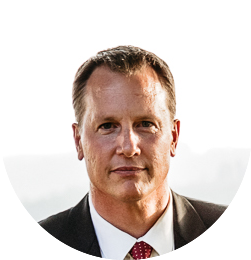Individuals 50 of 5,790 results
Organisations 50 of 8,179 results
Buzzes 50 of 13,872 results
MSCI Sustainability Institute: Where climate finance could flow next
MSCI Sustainability Institute: Where climate finance could flow next
(https://www.msci-institute.com/themes/climate/where-climate-finance-could-flow-next/)
Could tensions over trade and changes in U.S. policy shift the eye of climate finance away from the world’s largest economy?
"That’s one possibility suggested by recent flows within climate-themed funds. While U.S.-based companies have historically attracted the lion’s share of investment in these strategies, funds have begun to flow toward opportunities elsewhere in recent months.
Since 2018, U.S.-listed companies have made up a larger share of climate funds than they do of the overall market, averaging 67% in climate funds, compared with 58% in global markets generally (as represented by the MSCI ACWI Index), based on publicly listed funds in our coverage."
MSCI: Technology and Policy Both Temper and Drive Transition Risk
MSCI: Technology and Policy Both Temper and Drive Transition Risk
Emissions aren’t the only driver of transition risk for companies. To fully understand the headwinds and opportunities companies face, institutional investors, corporate advisors and underwriters need to consider the full picture.
The economic costs associated with the energy transition are underpinned by greenhouse-gas (GHG) emissions, but manifest through the availability of technology and stringency of regulation.
If there are no viable technologies to decarbonize high-emitting activities, or no low-emission alternatives to certain products and services, companies may face fewer economic consequences, at least in the short term. Against that, regulators may create bans, standards or trading schemes to price emissions and force companies to bear some of the costs of reducing them.
While the energy, utilities and materials sectors face the highest transition risks overall, according to our research, variations in underlying business models and relevant policies drive important differences at the sub-industry and company level.
Carbon Tracker: Solving the Oil Field Paradox
Carbon Tracker: Solving the Oil Field Paradox
(https://carbontracker.org/reports/solving-the-oil-field-paradox/)
The “oil field paradox” refers to the growing disconnect within industry, where some companies have created and profited from oil wells, walking away before the clean-up bill comes due, while others, who now own the wells, often lack the financial capacity – or the incentive – to clean up, transferring the risk to states, communities and ultimately taxpayers.
How does a domestic oil industry that generates tens of billions of dollars in after-tax profits annually leave millions of wells and billions in liabilities at risk of becoming the public’s responsibility? If the government will ultimately pick up the tab, what incentive is there for operators to accelerate plugging activity?
DB Research: The global renaissance of nuclear energy
DB Research: The global renaissance of nuclear energy
For years, the majority of global investments in the electricity sector have flowed into renewable energies. At the same time, many countries want to reduce or completely eliminate coal's share in electricity generation.
However, despite the high investments, the contribution of wind power and photovoltaics to the global energy supply is still small.
It is clear that, in the foreseeable future, energy sources are needed that are less harmful to the climate than coal, but more powerful than (weather-dependent) renewables and can complement them well in terms of security of supply.
PGIM: Sustainable development goals - liquid market approach to impact investing
PGIM: Sustainable development goals - liquid market approach to impact investing
"How can investors uncover companies that make a positive impact and also provide a compelling return profile? By following the market.
Our research shows that:
- Changing consumer preferences and demand are driving companies to provide more impactful and responsible products and services.
- Asset owners, in turn, are increasingly seeking investments that intersect upside returns and sustainability.
- Complex problems require multi-dimensional solutions that not only target companies with alignment to SDGs, but also those with strong ESG and fundamental attributes while balancing risk considerations.
- This tradeoff between risk and sustainability necessitates a sophisticated data approach and advanced portfolio engineering."
ICMA/Others: Sustainable Bonds for Nature: A Practitioner’s Guide
ICMA/Others: Sustainable Bonds for Nature: A Practitioner’s Guide
Nature – biodiversity, ecosystems, and ecosystem services – provides critical services to the functioning of the planet and the global economy, ensuring human well-being and powering economic growth and job opportunities. Yet, global economic activity and consumption patterns are driving the unprecedented loss of nature.
The Intergovernmental Science and Policy Platform on Biodiversity and Ecosystem Services (IPBES)1 and the United Nations Convention on Biological Diversity (UN CBD)2 identified five human-made direct drivers of biodiversity and ecosystem services loss (also referred to
as “pressures”): land and sea use change, direct use and (over)exploitation of natural resources, climate change, pollution, and invasive alien species.
In response, the Kunming-Montreal Global Biodiversity Framework (GBF)3, adopted by 188 countries in 2022, calls for a whole-of-economy transformation to halt and reverse nature loss by 2030 for the benefit of people and the planet. Investing in such a transformation to conserve and restore critical natural ecosystems and to shift economic sectors to sustainable practices can create long-term value, achieve global environmental objectives, and support sustainable
livelihoods. The GBF estimates the annual financing needs to be $700 billion to meet these objectives.
The bond market has substantial potential to drive investments towards achieving the collective goals articulated in the GBF. A number of nature and biodiversity themed green bonds have already been issued where an amount equal to a portion or 100% of the proceeds was allocated to conservation and restoration, and/or activities addressing the direct drivers of nature loss. These issuances reflect a growing interest in these types of themed instruments.
Carbon Tracker: Investor Trust: The Role of Audit Disclosures (Wbr 25 Jul)
Carbon Tracker: Investor Trust: The Role of Audit Disclosures (Wbr 25 Jul)
(https://carbontracker.zoom.us/webinar/register/9117484380806/WN_hFieGxu7SVWMk8jLjsl7Hg#/registration)
Tues 22nd July 2025
16:00 UK | 17:00 CET | 11:00 NY | 08:00 SAN FRAN
"Investor confidence is built on transparency — but are current audit practice disclosures doing enough to uphold it?
Join us for a 45-minute webinar exploring how the lack of audit practice transparency poses risks to investor trust and what can be done to address it. This is your opportunity to hear from specialist voices in finance, audit, and sustainability - and to ask your own questions."
HarbourVest: Climate Investing Across Private Markets
HarbourVest: Climate Investing Across Private Markets
Climate Investing Across Private Markets: A Return-Focused Perspective
Global investment in the energy transition has risen from $200 billion in 2004 to $1.8 trillion in 2023. This substantial growth has brought the climate investment landscape to an important inflection point, where it now offers investors a compelling market opportunity from both a scale and risk-return perspective.
More companies can deploy climate technologies and reduce emissions without sacrificing profitability, largely due to lower costs and improved functionality across a wide range of climate-related technologies including solar, battery storage, and electric vehicles (EVs).
This expanding universe of attractive business models and more experienced general partners (GPs) are combining to present dynamic opportunities for investors across private markets strategies to participate in the climate market without foregoing investment discipline.
Altiorem: A blueprint for best practice in investor collaborations
Altiorem: A blueprint for best practice in investor collaborations
Expert Guide for: Investment
17 June 2025
This guide provides practical steps for successful investor collaborations, helping investors navigate challenges, align on objectives and leverage collective influence. Drawing from expert insights and real-world case studies, it outlines effective governance, engagement strategies and resource management to drive measurable corporate and policy change through coordinated investor action.
Gresham House: Sustainable Investment Report 2024
Gresham House: Sustainable Investment Report 2024
(https://greshamhouse.com/sustainable-investment-report-2024/)
"Welcome to our latest Sustainable Investment Report, covering the year to 31 December 2024. This year, we have brought together all of our major sustainability-related disclosures into this single, comprehensive Sustainable Investment Report, aligned with the International Sustainability Standards Board (ISSB) framework.
By adopting ISSB as our guiding framework, we are responding to growing calls for consistent, decision useful sustainability information. Our report now fully integrates the Task Force on Climate-related Financial Disclosures (TCFD) recommendations, and for the first time, includes disclosures aligned with the Taskforce on Nature-related Financial Disclosures (TNFD).
We have also incorporated our UK Stewardship Code report, setting out how we meet the 12 principles of effective stewardship, our progress in 2024, and how we continue to embed stewardship into our investment processes."
Creative Investment Research: Black Employment Crisis: Sharp Job Losses Signal Deepening Economic Strain in 2025
Creative Investment Research: Black Employment Crisis: Sharp Job Losses Signal Deepening Economic Strain in 2025
Black communities in the United States are facing a troubling surge in job losses, according to new analysis released by economist William Michael Cunningham of Creative Investment Research.
The June 2025 employment report reveals Black male unemployment skyrocketed from 5.2% to 6.9% in a single month, marking the steepest monthly increase outside of the COVID lockdown in more than a decade.
Meanwhile, Black women have experienced an estimated 412,000 job losses in 2025 to date, with employment falling from 10.332 million to 10.248 million between May and June. See here
Little Square Capital: Helium Market Dynamics - Supply Chain Vulnerabilities Mask Abundant Resources
Little Square Capital: Helium Market Dynamics - Supply Chain Vulnerabilities Mask Abundant Resources
(https://www.littlesquarecapital.com/resources/industries/industrial-gases/helium/)
Helium Markets - Supply Chain Vulnerabilities Mask Abundant Resources
Our analysis of the global helium market reveals a compelling case study in critical resource mismanagement that warrants attention. The narrative of helium scarcity appears fundamentally flawed. Despite widespread concerns about helium running out, global reserves are abundant—estimated at 51.9 billion cubic meters, sufficient to meet over 260 years of current demand. Yet persistent supply chain inefficiencies and policy contradictions create material investment risks and opportunities.
The Real Problem: Supply Chain Fragility
The helium market's challenges stem from structural issues rather than geological scarcity:
- Concentration of distribution: A few large distributors control the market, driving up prices for uncontracted buyers
- Environmental: 50% of annually produced helium is wastefully flared/vented, directly linked to methane emission practices
- Governance: U.S. policy inconsistency (export promotion while claiming criticality) raises regulatory risk concerns
- Limited supply flexibility: Nearly every molecule is pre-contracted, leaving little room for spot purchases
- Infrastructure constraints: Cryogenic storage and transportation requirements create bottlenecks
The shift from government-controlled pricing to market mechanisms has created a two-tier system where upstream producers remain locked in low-margin contracts while liquid helium distributors capture premium pricing. The high cost of cryogenic transportation of liquid helium is a key factor in this dynamic (with specific read-across to any future geologic hydrogen supply). This dynamic particularly affects research laboratories, with the primary beneficiaries being downstream distributors rather than extraction companies.
Policy Contradictions
The analysis highlights a troubling inconsistency in U.S. critical minerals policy. Despite once being deemed critical enough to ban exports, the U.S. now continues exporting critical helium resources while providing taxpayer-funded subsidies to the industry—a policy that appears to prioritise private profits over national interests.
Future Outlook
Expansion of semiconductor manufacturing and datacenter capacity is closely matched by new regional sources of natural gas associated helium supply that doesn't require cryogenic transport, balancing the demand and supply outlook. Expanding LNG production worldwide is expected to significantly increase helium supply as a byproduct, potentially leading to structurally lower prices - if the supply sources will be deemed geopolitically acceptable.
Conclusion
The helium industry serves as a cautionary tale about critical minerals policy. The narrative of scarcity masks the real issues: inefficient supply chains, regulatory inconsistencies, and market concentration. Rather than running out, helium's future depends on addressing these structural problems through better regulations, improved recycling, and more coherent policy frameworks that align national interests with market realities.
Robeco: Are humanoids the future of industrial automation?
Robeco: Are humanoids the future of industrial automation?
(https://www.robeco.com/en-int/insights/2025/07/are-humanoids-the-future-of-industrial-automation)
Factory automation has been evolving for decades, but many tasks require human-level dexterity that current industrial robots lack. Humanoids are designed to fill the gap, helping address chronic labor shortages and improving productivity. Here we explain the challenges and opportunities for smart materials and manufacturing.
Summary
- More factory automation leads to higher productivity
- Humanoid adoption hinges on dexterity
- Component suppliers as interesting as humanoid producers
TPI Centre: Award Recognition for the Net Zero Standards Assessment Framework
TPI Centre: Award Recognition for the Net Zero Standards Assessment Framework
(https://www.transitionpathwayinitiative.org/publications/125/show_news_article)
The Transition Pathway Initiative Centre (TPI Centre) has been awarded the ESG assessment tool of the year – ratings in the 2025 Sustainable Investment Awards for its Net Zero Standards Assessment Framework. These global awards seek to recognise asset managers, analysts and data providers incorporating ESG across all asset classes.
TPI Centre: LuxSE launches a new innovative Transition Finance Gateway
TPI Centre: LuxSE launches a new innovative Transition Finance Gateway
(https://www.transitionpathwayinitiative.org/publications/127/show_news_article)
Luxembourg, 2 July 2025: Today, the Luxembourg Stock Exchange (LuxSE) announced the launch of a brand-new initiative which aims to support issuers in their transition journey and provide transparency to investors.
The Transition Finance Gateway shines the spotlight on the exchange’s some 500+ non-financial corporate debt issuers across both conventional and sustainable bonds.
Leveraging the powerful transition data of four data providers - CDP, the Net Zero Tracker and the Science-Based Targets Initiative (SBTi) and the Transition Pathway Initiative (TPI) Centre. This marks a new step for LuxSE as it shifts its attention from security-focused to entity-level analysis.
Neuberger Berman: 2024 Stewardship & Sustainable Investing Report
Neuberger Berman: 2024 Stewardship & Sustainable Investing Report
Neuberger Berman: 2024 Stewardship & Sustainable Investing Report
Hardman: UK power cuts - a real risk?
Hardman: UK power cuts - a real risk?
(https://hardmanandco.com/research/corporate-research/uk-power-cuts-a-real-risk/)
The risk of power cuts in the UK, for a variety of reasons, remains real.
A recent Spanish government report has now placed much of the blame on the national system operator, the Redeia-owned Red Electrica.
For many years, the UK’s plant margin has been worrying low, although imports via interconnectors, especially from France, provide added capacity.
Nevertheless, the forthcoming closures of all major UK nuclear plants, Sizewell B excepted, can only worsen this scenario.
Looking to the long term, the government has recently announced new nuclear-build initiatives.
The winner of the government’s Small Modular Reactor (SMR) nuclear plant competition has been announced. Not surprisingly, Rolls Royce’s persuasive case has prevailed, and it is planning to build three 470MW SMR plants in the UK.
Tesco: Sustainability Report 2025
Tesco: Sustainability Report 2025
(https://www.tescoplc.com/media/wvkj1yic/tesco-sustainability-report-2025.pdf)
Focal Points:
- 65% reduction in emissions from operations, exceeding 2025 target of 60%.
- 5 new wind and solar Power Purchase Agreements (PPAs) have come online across the UK in the last 18 months.
- 64% of "all the food we sell in the UK and ROI is now classified as healthy (by volume)."
Parameters:
- Data to: 31 December 2024
- Published: May 2025
- Materiality Matrix: NB Double materiality analysis completed and assessed for readiness
- ESG data centre: Sustainability factsheets via here
BASF: Report 2024 (BASF Group)
BASF: Report 2024 (BASF Group)
Economic, environmental and social performance
Focal Points:
- "Chemistry is our passion. We set a new direction for ourselves with the introduction of the “Winning Ways” strategy in September 2024: Our ambition is to be the preferred chemical company to enable our customers’ green transformation."
Parameters:
- Data to: 31 December 2024
- Published: March 2025
- Materiality Matrix: See page 167
- ESG data centre: Some KPIs here
First Sentier MUFG Sustainable Investment Institute: Health & Global Food Systems: An Investor's Guide
First Sentier MUFG Sustainable Investment Institute: Health & Global Food Systems: An Investor's Guide
First Sentier MUFG Sustainable Investment Institute: Health & Global Food Systems: An Investor's Guide
Global food sector activities profoundly impact human health, with obesity, malnutrition, food insecurity and antimicrobial resistance from animal farming posing critical challenges.
These challenges are linked to financial impacts including increasing healthcare costs, productivity losses, and regulatory pressures, leading to significant risks for investors. Public policy developments such as sugar taxes, marketing restrictions, limits on the inappropriate use of antibiotics, and shifting consumer preferences directly affect corporate revenue streams, underscoring the materiality of this theme for corporate profitability and investor returns.
This report aims to help investors in assessing food sector risks and opportunities, and offers investor engagement guidance on health-related issues in the food sector, enabling investors to drive meaningful stakeholder engagement across the key themes:
- Pricing and Affordability
- Sales and Targets
- Marketing and Advertising
- Product Reformulation and Innovation
- Governance and Strategy
- Risk Management
Aegon AM: Aviation’s decarbonisation challenge
Aegon AM: Aviation’s decarbonisation challenge
(https://www.aegonam.com/aegon-insights/responsible-investing/aviations-decarbonisation-challenge/)
"Aviation stands at a critical crossroads: while connecting economies and cultures by transporting around 9 billion passengers annually, the sector currently contributes 2-3% of global greenhouse gas emissions (GHGs). Unlike other industries making rapid progress toward decarbonisation, aviation’s emissions are projected to grow significantly without intervention.
This diverging pathway creates both urgent challenges and unprecedented opportunities for industry transformation. In this article, we outline the technological, operational and policy pathways to reducing GHG emissions."
DNB AM: Trump and the anti-ESG movement: Impact on renewable energy
DNB AM: Trump and the anti-ESG movement: Impact on renewable energy
(https://dnbam.com/en/finance-blog/trump-and-the-anti-esg-movement-impact-on-renewable-energy)
Despite the political measures initiated or planned by Donald Trump in the area of renewable energies, several factors indicate that the impact on this sector will be less severe than feared....
LGT: Resilient optimism: the unsung secret of business success
LGT: Resilient optimism: the unsung secret of business success
(https://www.lgtwm.com/uk-en/insights/lifestyle/resilient-optimism-292022)
At a glance
- Resilient optimism, or "optimism with a safety net," is a key but often overlooked driver of business success, blending belief in progress with preparedness for setbacks.
- Rooted in psychological capital (PsyCap), this mindset improves leadership, team performance, and even health, while guarding against the pitfalls of overconfidence.
- Organisations can foster resilient optimism by modelling it from the top, empowering employees, communicating transparently, and preparing realistically for adversity.
Asset Management One: Annual Report 2024
Asset Management One: Annual Report 2024
(https://www.am-one.co.jp/img/english/26/sustainability_report_e_2024.pdf)
Contains sustainable investing information
Australian Ethical: Annual Report 2024
Australian Ethical: Annual Report 2024
(https://www.australianethical.com.au/globalassets/pdf-files/annual-reports/2024-annual-report.pdf)
Contains sustainable investing information
Janus Henderson: Global Perspectives: Inside the world of responsible mining (podcast/video)
Janus Henderson: Global Perspectives: Inside the world of responsible mining (podcast/video)
In this episode, Senior Investment Manager Tal Lomnitzer and Chief Responsibility Officer Michelle Dunstan explore the critical role of natural resources and how integration of financially-material Environmental, Social and Governance (ESG) factors is essential for mining companies as they navigate the complexities of geopolitical and environmental challenges.
Transcript available
BNP Paribas: ESG Survey 2025
BNP Paribas: ESG Survey 2025
(https://securities.cib.bnpparibas/esg-survey-2025/)
Institutional investors leading the way
BNP Paribas’ ESG Survey 2025 commissioned CoreData Research to gather the views of 420 asset owners, asset managers and private capital on their attitudes and practices relating to ESG and sustainable investing in 29 locations worldwide. The data was collected between the end of November 2024 and end of January 2025. The quantitative data was further supplemented by in-depth qualitative interviews with industry experts carried out between February and April 2025. This report is based on the data and information collected in this survey and the interviews.
Societe Generale: 2024 ESG Survey (Credit)
Societe Generale: 2024 ESG Survey (Credit)
(https://markets.societegenerale.com/2024esgsurvey/p/1)
Conducted in the Fourth Quarter of 2024, the survey gathered insights from 147 institutional investors in the credit market - focusing on ESG trends in four main areas:
- Motives for ESG consideration
- Approaches to ESG consideration
- Integration for ESG consideration
- Market expectations and outlook
Morningstar: Voice of the Asset Owner Survey 2025
Morningstar: Voice of the Asset Owner Survey 2025
A global survey of institutional investor priorities & perspectives
Common threads from in-depth interviews with asset owners across North America, Europe and Asia-Pacific included:
- World Order Disrupted: Geopolitical shifts drive rethink on asset allocation
- ESG Re-examined & Deconstructed.
- Rollbacks & Blowbacks: Regulatory Fine-Tuning
- Climate Strategy Evolving
Amundi: Constructing Investment Portfolios with Climate-Relevant Metrics
Amundi: Constructing Investment Portfolios with Climate-Relevant Metrics
A multi-faceted problem
Abstract:
The integration of climate-related signals within investment portfolios is becoming an increasingly mandatory requirement, as well as an expected practice, on the part of regulators and institutional investors respectively.
In this paper, we illustrate the introduction of these metrics as optimization constraints, as outlined in Le Guenedal and Roncalli (2022).
After recalling the diversity of climate relevant metrics beyond carbon intensity, we integrate carbon historical trends, ambition reduction (derived from companies future targets) and run backtests of our novel multi-constraints optimization problem on the period from 2021 to 2024.
We illustrate the impact of considering these metrics on performance and tracking error (T.E.).
We show that the MSCI World Index theoretically tolerates a high level of integration of climate metrics with limited losses in performance or T.E. costs.
Furthermore, we demonstrate that, in some cases, applying constraints of different climate aspects can yield better results than relying on a single, highly restrictive metric.
Case studies show that portfolios combining moderate spot decarbonization limits with stronger trend and ambition constraints can achieve comparable—or even superior—performance, depending on the period under consideration.
This paper paves the way for the development of new methodologies for constructing aligned benchmarks.
Climate Bonds Initiative: Sustainable Debt - Global State of the Market 2024
Climate Bonds Initiative: Sustainable Debt - Global State of the Market 2024
The 14th edition of its most popular publication. The scope of the findings includes analysis of green, social, and sustainability (GSS) bonds as of 31st December 2024 considered to be in alignment with Climate Bonds Dataset Methodologies plus sustainability-linked bonds (SLBs).
By the end of 2024, Climate Bonds had recorded:
- USD6.9tn of cumulative GSS and SLB (collectively GSS+) volume, of which USD5.7tn (83%) was found to be aligned with the Climate Bonds Methodologies.
- Further, USD1.05tn in aligned deals were priced in 2024, marking a record year with 10,331 deals and a year-on-year (YOY) increase of 31%. This increase highlights a growing demand for improved transparency and rigour in the sustainable debt market, as highlighted in the recent Transparency & Reporting in the GSS Bond Market report.
Ember: Powering China's New Era of Green Electrification
Ember: Powering China's New Era of Green Electrification
As China’s energy transition deepens, breakthroughs in emerging technologies will do far more than enable systemic energy transformation — they will reinforce the “growing by greening” cycle. This dynamic can help sustain the policy commitment, necessary to drive deep structural changes — essential for building a clean electricity future.
...
- China’s “more renewables, more coal” era is ending ...
- Deeper transition now hinges on breakthrough beyond wind and solar. As China enters this transformative phase, success demands a paradigm shift — from chasing “megawatts” to engineering a “megasystem” ...
- Unlocking new frontiers for green growth. While the "new three" sectors - solar, batteries, and EVs — have become key drivers of GDP growth, achieving double-digit expansion last year, China only narrowly met its GDP target ...
- Sustaining momentum for China’s next-phase energy transition. By reinforcing the "growing by greening" dynamic ...
Morningstar: The Impact of ESMA's ESG Fund Naming Rules
Morningstar: The Impact of ESMA's ESG Fund Naming Rules
(https://www.morningstar.com/en-uk/business/lp/impact-esma-fund-naming-rules)
Until November 21, 2024, it was common for funds deemed to apply ESG-related strategies to have an ESG reference in their name.
The ESMA ESG fund naming rules caused many funds with an ESG reference in their name to rename. According to a previous Morningstar Sustainalytics report, at least 880 funds changed names between May 2024 and 2025. A relatively large number of passive funds either dropped the reference or changed it.
According to the fund companies, all funds in scope of this paper retained their ESG approach despite removing or changing the ESG reference in the fund names. None of the active and only a few passive funds saw a change in their approach or objectives.
MSCI: Materiality-Weighted Portfolio Carbon Footprint
MSCI: Materiality-Weighted Portfolio Carbon Footprint
(https://www.msci.com/research-and-insights/paper/materiality-weighted-portfolio-carbon-footprint)
The total carbon footprint of a portfolio has commonly been used both as a measure of that portfolio’s climate impact and as a measure of transition risk. However, we found that impact and risk measurement may require different approaches. A tonne of CO2 has the same impact on our climate no matter where or how it's emitted. But when it comes to a company's transition risk, not all emissions are created equal. Some emissions matter more, depending on where they come from and the industry context. We found that investors could get a better signal by focusing on a materiality-weighted carbon footprint.
Our analysis shows that, over the past decade, emissions-based transition risk has had a stronger relationship with corporate earnings, stock performance and credit risk than previous academic studies suggested.
Carbon footprint versus transition risk
...
MSCI SI: Climate pragmatism in a fragmented world
MSCI SI: Climate pragmatism in a fragmented world
(https://www.msci.com/research-and-insights/blog-post/climate-pragmatism-in-a-fragmented-world)
Finance is adapting.
Achieving net-zero as soon as possible has long been seen as critical for safeguarding our economy and society. Yet doing so by 2050 through a finance-led transition now seems out of reach. Hence investment institutions, banks and insurers are getting pragmatic: preparing for the worst, while still aiming for the best, under the circumstances.
The circumstances are that our world is increasingly fragmented. Physical impacts differ drastically by location, climate policies differ substantially by markets, as do energy mix and clean-tech adoption.
Pinpointing exposure
...
Klement on Investing: I want it to matter, but it doesn't
Klement on Investing: I want it to matter, but it doesn't
(https://klementoninvesting.substack.com/p/i-want-it-to-matter-but-it-doesnt)
I have written a couple of times about biodiversity issues in ESG investing. While I was sceptical, I was also hoping that as the area evolved, we would get better measurements of biodiversity risks (which we did) and a better grasp of their impact on share price returns. Alas, so far, the impact of biodiversity risks on share prices remains elusive. A new study with Chinese companies doesn’t help.
Unilever: Integrated Annual Report & Accounts 2024
Unilever: Integrated Annual Report & Accounts 2024
(https://www.unilever.com/files/unilever-annual-report-and-accounts-2024.pdf)
Unilever: Integrated Annual Report & Accounts 2024
Focal Points:
- "Sustainability is a strategic imperative for Unilever and a critical part of our Growth Action Plan 2030.
- In May last year, we set out our refocused approach to help accelerate action on four key priority areas: climate, nature, plastics and livelihoods.
- Since then, we’ve been laying the foundations for more focused delivery and improving our underlying data, monitoring and reporting systems.
- There’s more to do, but we’re making encouraging early progress against our near- and medium-term goals."
Parameters:
- Data to: 31 December 2024
- Published: March 2025 (assurance date)
- Materiality Matrix: not found
- ESG data centre: not found (SASB mapping here)
Melexis: Integrated Annual Report 2024
Melexis: Integrated Annual Report 2024
Focal Points:
- One of the 2024 highlights was to integrate sustainability-related performance metrics into the Executive Management's incentive scheme for the first time. This proposal will be presented at this year’s general meeting of shareholders.
- One area of focus is a transition plan for climate change. Melexis’ core business supports vehicle electrification which helps to lower emissions. In 2024, the firm decided to set a more ambitious climate target, in which we commit to reduce Scope 1 and 2 GHG emissions per million sold integrated circuits by 55% by 2030 compared with 2024.
Parameters:
- Data to: 31 December 2024
- Published: April 2025 (assurance date)
- Materiality Matrix: See page 43
- ESG data centre: not found
Compass Group: Sustainability Report 2024
Compass Group: Sustainability Report 2024
Focal Points:
- 4% reduction in overall greenhouse gas intensity ratio (normalised for revenue growth) across total Scope 1, 2 and 3 emissions compared to 2023
- Almost 10,000 sites consistently recording food waste
Parameters:
- Data to: 31 December 2024
- Published: 2025
- Materiality Matrix: See page 5
- ESG data centre: Energy and GHG data here
ArcelorMittal: 2024 Sustainability Report
ArcelorMittal: 2024 Sustainability Report
Focal Points:
- The report provides an update on the progress made in 2024 on the Company’s most material sustainability topics, which include safety, decarbonisation, the environment, biodiversity, and people.
- It also contains the first update on the implementation of the dss+ safety recommendations, published in October 2024 following the completion of the nine-month Group-wide audit.
Parameters:
- Data to: 31 December 2024
- Published: April 2025 (assurance date)
- Materiality Matrix: See page 3 business model
- ESG data centre: not found
RepRisk: Boosts agentic AI delivery to power data integration
RepRisk: Boosts agentic AI delivery to power data integration
RepRisk adds 30 new team members to further innovate agentic AI delivery and data integration, building on two decades of AI innovation and human-labeled data.
23 new hires take on AI, engineering, and connected-LLM expert roles with most positions based at RepRisk’s Zurich headquarters and several located in the Berlin office, forming a dedicated agentic products team. To satisfy client demand for enterprise-wide data integration, 7 of the 30 new full-time employees will strengthen the key account management and data delivery and integration teams.
Keep an eye on open positions and set up your job alerts at reprisk.com/careers. Please note that we do not accept applications via email.
UBS: Is there a role for lead & zinc in the new energy economy?
UBS: Is there a role for lead & zinc in the new energy economy?
Electricity Demand Growth: Electricity demand outpaced overall energy demand growth last year, with electricity demand reaching 34% of total energy demand in 2024.
Hyperscalers Shift to Renewables: Hyperscalers (the largest cloud infrastructure firms) are adopting a strategy of co-locating new renewable energy sources, in part to avoid rising power costs, which have been traditionally linked to commodities like natural gas.
Battery Storage Rise: Battery energy storage systems (BESS), using lead-acid or zinc-bromide alongside lithium-ion, present a potential solution to the problem of renewable energy variability for these facilities.
Zinc and Lead Opportunity: Increased BESS use could boost demand for zinc and lead under certain adoption scenarios, improving market outlook by enhancing their role in the green energy economy.
WBCSD: Demystifying Investor Sustainability Information Needs and Use
WBCSD: Demystifying Investor Sustainability Information Needs and Use
(https://www.wbcsd.org/resources/demystifying-investor-sustainability-information-needs-and-use/)
Contents
- A classification framework outlying sustainability-related information types and focus areas
- An overview of how investor information needs vary by investment style, strategy, asset class and intended action
- Guidance for companies on understanding your investors, how to prioritize, communicate, and respond to information needs and applications
- Insights on key investor actions: investment decision-making (incl. integration, screening, thematic), engagement & stewardship, and reporting
- Case studies from asset managers and companies, covering nature, equity, and climate
Comment from SRI-C team
SRI-Connect was delighted to collaborate in the production of this guide. It is no exaggeration to say that writing this guide (and its predecessor on integration into valuation) have fundamentally challenged (and changed) our perceptions of (and ability to articulate) what information investors actually use (as opposed to what commentators say (and regulators assume) investors should need). It's all rather different but encouragingly (!) some of the concepts and definitions developed in the work show a much more constructive way forward for sustainable investors than might otherwise have been apparent.
Plant based news: Is 2025 The Year Of Ethical Dog Food?
Plant based news: Is 2025 The Year Of Ethical Dog Food?
(https://plantbasednews.org/animals/the-year-of-ethical-dog-food/)
Interest in plant-based dog food has been growing for years as the ethical and environmental impact of feeding other animals to dogs has come under increased scrutiny.
If you want to put your dog on a plant-based diet, it’s now easier than ever. There are at least a dozen nutritious plant-based dog food brands to choose from, available online and in stores. Many also make plant-based treats. There are even cultivated chicken dog treats now on sale in the UK for the first time.
“There has been a huge interest in vegan and sustainable pet diets recently,” Veterinary Professor of Animal Welfare Andrew Knight tells Plant Based News. “Many pet guardians and pet care industry professionals are learning that nutritionally sound vegan commercial pet foods now exist, and that these can offer significant benefits for pet health and environmental sustainability.”
Has this momentum now gathered enough pace that 2025 could become the year ethical dog food goes mainstream?
Jobs 50 of 375 results
JobPost: UGI Corp. - Manager - ESG & Investor Relations (US, close unknown)
JobPost: UGI Corp. - Manager - ESG & Investor Relations (US, close unknown)
JobPost: UGI Corp. - Manager - ESG & Investor Relations (US, close unknown)
Research Assistant, Transition Pathway Initiative Centre (TPI Centre)
Research Assistant, Transition Pathway Initiative Centre (TPI Centre)
(https://www.transitionpathwayinitiative.org/work-with-us)
The role will be based within the Carbon Performance or Climate Action 100+ (CA100+) team.
Do note, we are recruiting one candidate for each of the projects, so do express your interest in one of the listed projects and why you will be suited to it within the cover letter. While we will do our best to accommodate project preferences, we cannot guarantee placement in the preferred team.
Research Assistant, Transition Pathway Initiative Centre (TPI Centre)
Research Assistant, Transition Pathway Initiative Centre (TPI Centre)
(https://www.transitionpathwayinitiative.org/work-with-us)
- Collecting data from government documents, assessing the alignment of NDC emissions reduction targets with 1.5C and researching national policies on climate mitigation, adaptation, just transition and finance.
- Contributing to ongoing improvements in the existing ASCOR methodology.
- Supporting the maintenance of an internal assessment database using Excel alongside R or Python.
- Contributing to writing reports and related analysis and visualisations.
JobPost: ISS - New Business Sales - Climate & Sustainability (NYC, close unknown)
JobPost: ISS - New Business Sales - Climate & Sustainability (NYC, close unknown)
JobPost: ISS - New Business Sales - Climate & Sustainability (NYC, close unknown)
JobPost: PRI - Senior assoc. stakeholder experience, London, close 15/6
JobPost: PRI - Senior assoc. stakeholder experience, London, close 15/6
(https://app.beapplied.com/apply/yk2bn6z6ae)
Senior Associate, Stakeholder Experience
Principles for Responsible Investment
Employment Type Full time Please note, where PRI has an office there is an expectation to work a minimum of 2 days per week
Location Hybrid · London, UK
Seniority Junior
Closing: 8:00pm, 15th Jun 2025 BST
JobPost: PRI - Specialist, Investor Initiatives (London, Closing: 8:00pm, 5th Jun 2025 BST)
JobPost: PRI - Specialist, Investor Initiatives (London, Closing: 8:00pm, 5th Jun 2025 BST)
(https://app.beapplied.com/apply/xc4mwxyer3)
Specialist, Investor Initiatives
Principles for Responsible Investment
Employment Type Full time Please note, where PRI has an office there is an expectation to work a minimum of 2 days per week
Location Hybrid · London, UK
Team IIC
Seniority Mid-level
Closing: 8:00pm, 5th Jun 2025 BST
JobPost: M&G - Senior ESG Compliance Advisor (London/Edinburgh, close 30 June)
JobPost: M&G - Senior ESG Compliance Advisor (London/Edinburgh, close 30 June)
JobPost: M&G - Senior ESG Compliance Advisor (London/Edinburgh, close 30 June)
JobPost: PRI - Director, Responsible Investment Ecosystems Europe (London, close 15 Jun)
JobPost: PRI - Director, Responsible Investment Ecosystems Europe (London, close 15 Jun)
(https://app.beapplied.com/apply/qdqtanm1yc)
Principles for Responsible Investment
Employment Type Full time Please note, where PRI has an office there is an expectation to work a minimum of 2 days per week
Location Hybrid · London, UK
Seniority Senior
Closing: 8:00pm, 15th Jun 2025 BST
JobPost: JPMorganChase - Investment Banking – Sustainable Solutions – Analyst (London, Close 28 Jun)
JobPost: JPMorganChase - Investment Banking – Sustainable Solutions – Analyst (London, Close 28 Jun)
JobPost: JPMorganChase - Investment Banking – Sustainable Solutions – Analyst (London, Close 28 Jun)
JobPost: Lloyds Banking Group - Sustainability Reporting Manager (London, close 5 Jun)
JobPost: Lloyds Banking Group - Sustainability Reporting Manager (London, close 5 Jun)
JobPost: Lloyds Banking Group - Sustainability Reporting Manager (London, close 5 Ju
JobPost: M&G - ESG Manager (12 month Secondment / FTC) (London, close 24 May)
JobPost: M&G - ESG Manager (12 month Secondment / FTC) (London, close 24 May)
JobPost: M&G - ESG Manager (12 month Secondment / FTC) (London, close 24 May)
JobPost: Commerzbank - Intern in Group Capital Markets - ESG Advisory (m/f/diverse) (Frankfurt)
JobPost: Commerzbank - Intern in Group Capital Markets - ESG Advisory (m/f/diverse) (Frankfurt)
(https://jobs.commerzbank.com/index.php?ac=jobad&id=55827)
Temporary / Full time
Location
Frankfurt am Main
Function
Investment & Transaction Banking
Your tasks
- Analysis of the sustainability strategy of our clients and support the ESG Advisory team in preparing client pitches
- Support analysis and definition of meaningful, measurable, and ambitious ESG-relevant KPls (Key Performance Targets) and Sustainability Performance Targets (SPTs) for KPl-linked financing products
- Participate in the execution of sustainable finance transactions
- Work on ad hoc projects and tasks related to ESG and sustainable finance advisory
- Continuous update of our marketing material and our databases
JobPost: PRI - Analyst, Multi-Asset, Guidance (London | Closing: 8:00pm, 18th May 2025 BST)
JobPost: PRI - Analyst, Multi-Asset, Guidance (London | Closing: 8:00pm, 18th May 2025 BST)
(https://app.beapplied.com/apply/ojnfjklcqb)
JobPost: PRI - Analyst, Multi-Asset, Guidance (London | Closing: 8:00pm, 18th May 2025 BST)
Analyst, Multi-Asset, Guidance
Principles for Responsible Investment
Employment Type Full time Please note, where PRI has an office there is an expectation to work a minimum of 2 days per week
Location Hybrid · London, City of, UK
Seniority Junior
Closing: 8:00pm, 18th May 2025 BST



















